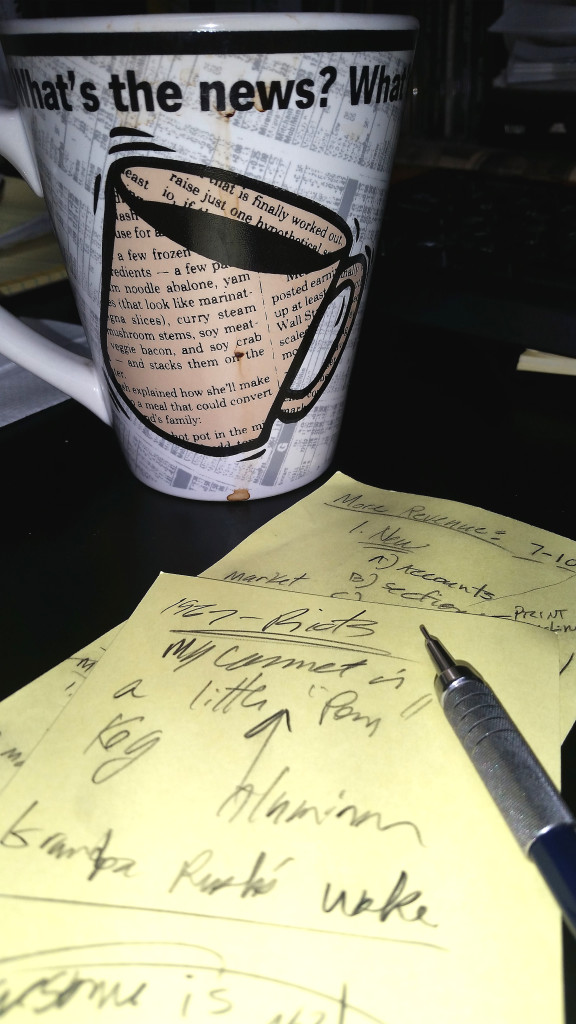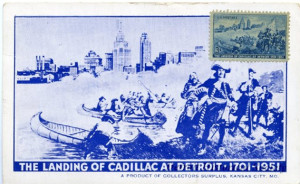
Every once in a while I pull out all the pieces of paper, note-pad and stuff from my breast pocket and actually read the scribbles I have placed on said pieces of processed wood pulp.
Throughout the course of any day I write down notes of thoughts, phone numbers, things to do or write about. Things I don’t want to forget. The problem I have is I forget to remember to look at my notes. I know, it’s a convoluted way to go through life, but hey, welcome to my world.
So, on a three-point-five-inch by five-point-five-inch yellow piece of cardboard stock, sometime in the past month I wrote, “1967 riots — little aluminum ‘pony’ keg from Grandpa Rush’s wake.”

My little bit of history from the ‘67 Detroit riots is an empty beer keg from my grandfather’s wake. Grandpa died 50 years ago, on July 24, 1967 — a day after the riots started. I am not old enough to remember the riots, nor the funeral, but I do remember the story of the pony keg as my father told me. Dad’s dad’s family is of Irish Catholic persuasion and my father wanted an Irish wake for his departed father.
Only problem was, Detroit was on lock-down with curfews and prohibition of alcoholic beverage sales. Dad went to a number of places to purchase a keg and was turned down until he found one party store owner who accepted a little payola under the table. Cash sales.

Once emptied, Dad kept the keg in our garages (first in Redford Township and then when we moved to Clarkston in 1971). He never said why he kept it. It just sat on the floor, in the corner collecting dust. When my dad died in 1996, I got the keg. It sits in my garage, on the floor collecting dust.
By the way, I have no idea why I keep it.
* * *
Two hundred and sixty-six years before Grandpa Rush died in Detroit, on July 24, 1701, Detroit was founded by Frenchman Antoine de La Mothe Cadillac. He built Fort du Pontchartrain du Détroit.

From ClickOnDetroit.com, “According to the Detroit Historical Society, he (Cadillac) led 100 Frenchmen and 100 Algonquins, and the settlement was named Détroit (Detroit) because that is the French phrase for ‘the strait,’ an obvious reference to our large river. For nearly 60 years, Detroit was a French stronghold.”
* * *
So, during the city’s 266th anniversary, violence ruled. This from Wikipedia.com.
“It began in the early morning hours of Sunday July 23, 1967. The precipitating event was a police raid of an unlicensed, after-hours bar then known as a blind pig, just north of the corner of 12th Street (today Rosa Parks Boulevard) and Virginia Park Ave. on the city’s Near West Side. Police confrontations with patrons and observers on the street evolved into one of the deadliest and most destructive riots in the history of the United States, lasting five days and surpassing the violence and property destruction of Detroit’s 1943 race riot.
“To help end the disturbance, Governor George W. Romney ordered the Michigan Army National Guard into Detroit, and President Lyndon B. Johnson sent in both the 82nd and 101st Airborne Divisions. The result was 43 dead, 1,189 injured, over 7,200 arrests, and more than 2,000 buildings destroyed. The scale of the riot was surpassed in the United States only by the 1863 New York City draft riots during the American Civil War, and the 1992 Los Angeles riots . . .”
When is Awesome not?
Also on my little yellow cardboard stock, circled in pencil lead, “Awesome is not.”
One of my secrets to note taking is to be stingy with the verbiage. I write down just enough to click or trigger a memory inside my head. Awesome is not, was to remind me, “Awesome did not always mean what it means today.”
Confession, I use “awesome” about 100 times a day. When asked, “How you doing, Don?” I answer, “Awesome.” It is a habit, I hope to break someday.
Some months ago, Librarian Kara from Grand Blanc met me among the books. Said she, “I looked up awesome (or “I read a book about the word awesome.” I cannot remember). Aweseome didn’t always mean ‘good.’”
I politely thanked her and not that I did not trust her, promptly did my own research as any good reporter is trained to do.
On June, 14, 2015, Ammon Shea wrote this in a blog. “When did this noble word begin getting stripped of its meaning, and forced into servitude as the vapid exclamation of slack-jawed teenagers? It began before most of the people reading this were born.
“The earliest use of awesome comes in the late 16th century, and the word had the meaning of ‘filled with awe.’ The problem with saying this is the same meaning that kids today should intend when they say the word is that awe had a somewhat different meaning back then; it generally referred to feelings of severe fear or dread. So people in the 17th century who were saying that something was awesome did not necessarily mean ‘that is a thing of great beauty’; chances are, they might have meant ‘that is a thing that sends shivers of terror down my spine.’”
* * *
Thus endeths today’s lessons.

Leave a Reply